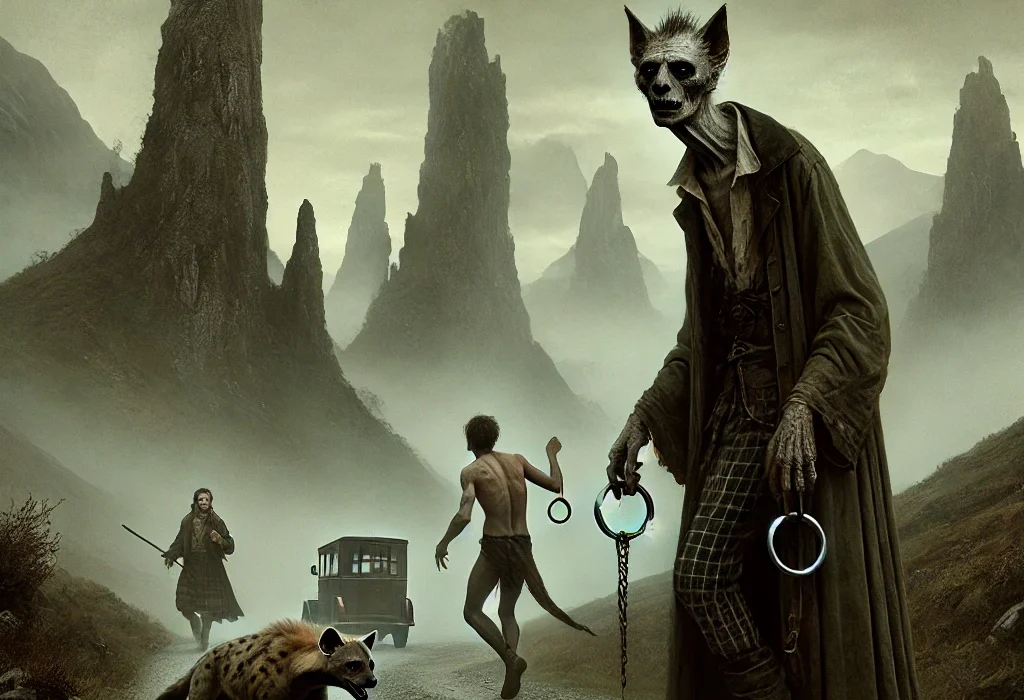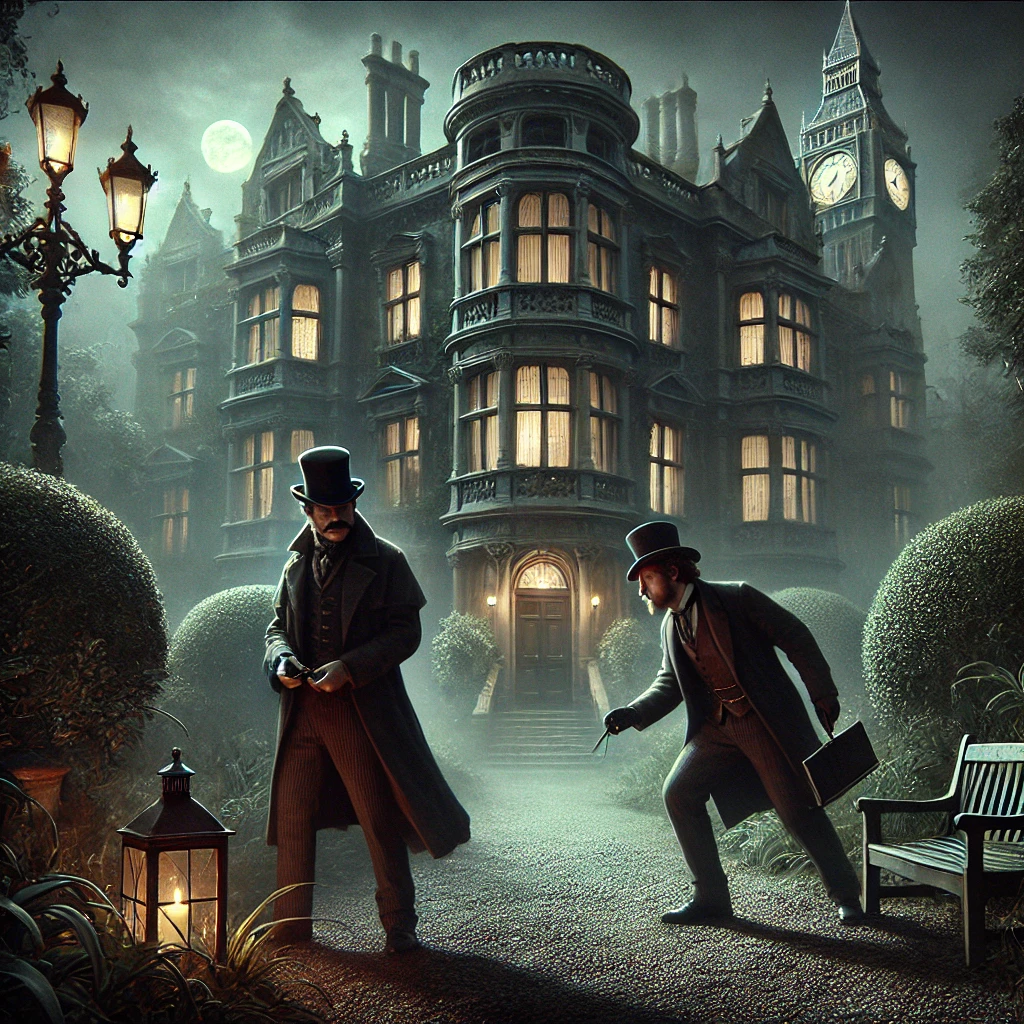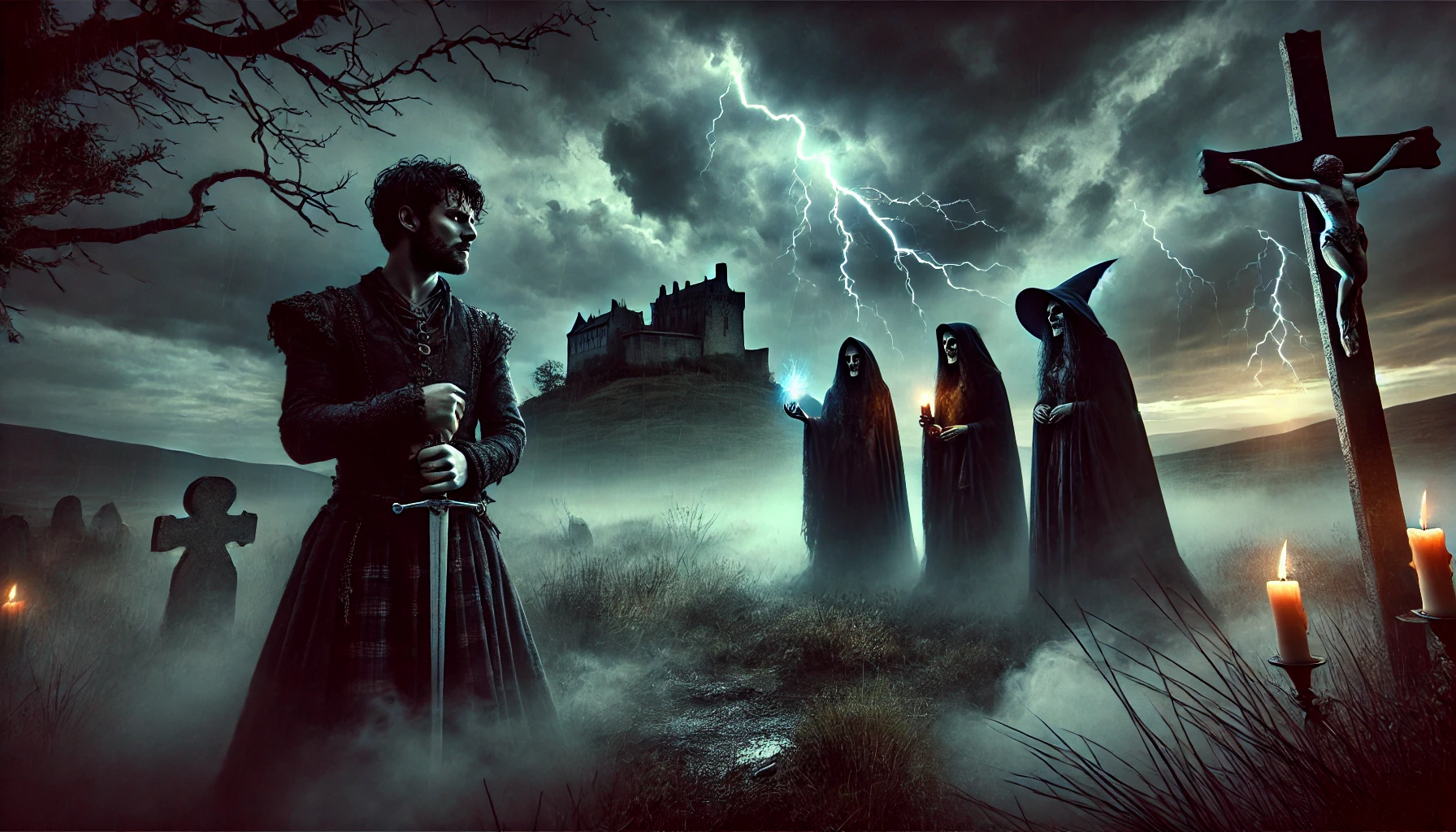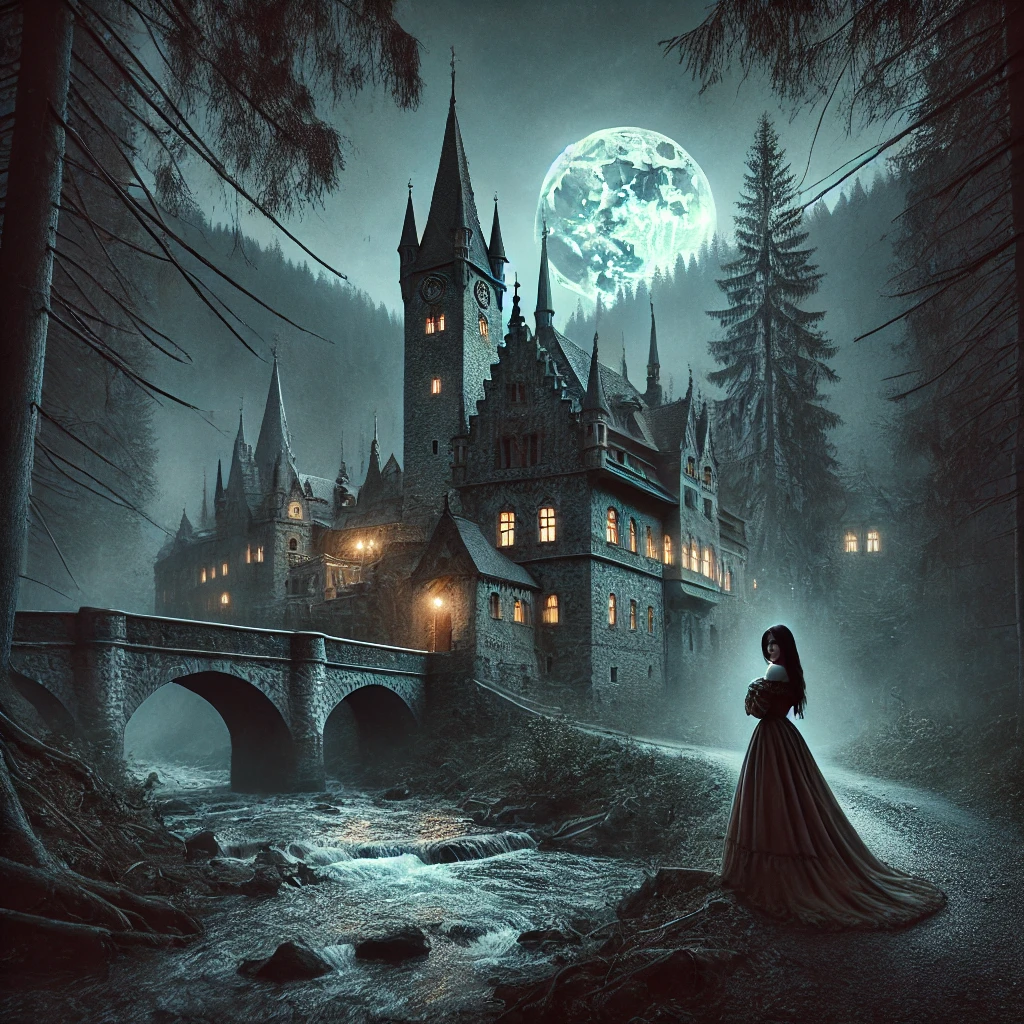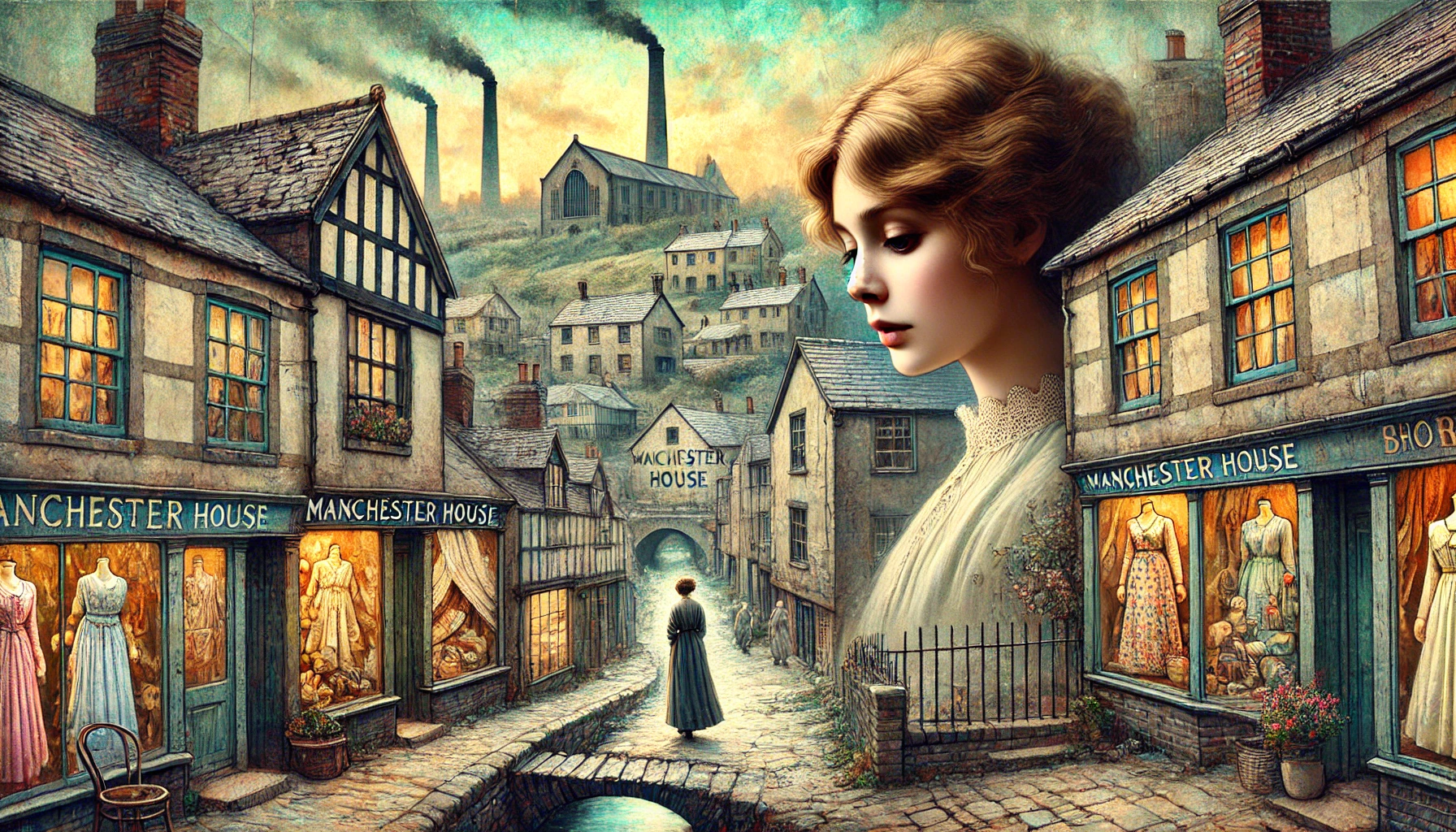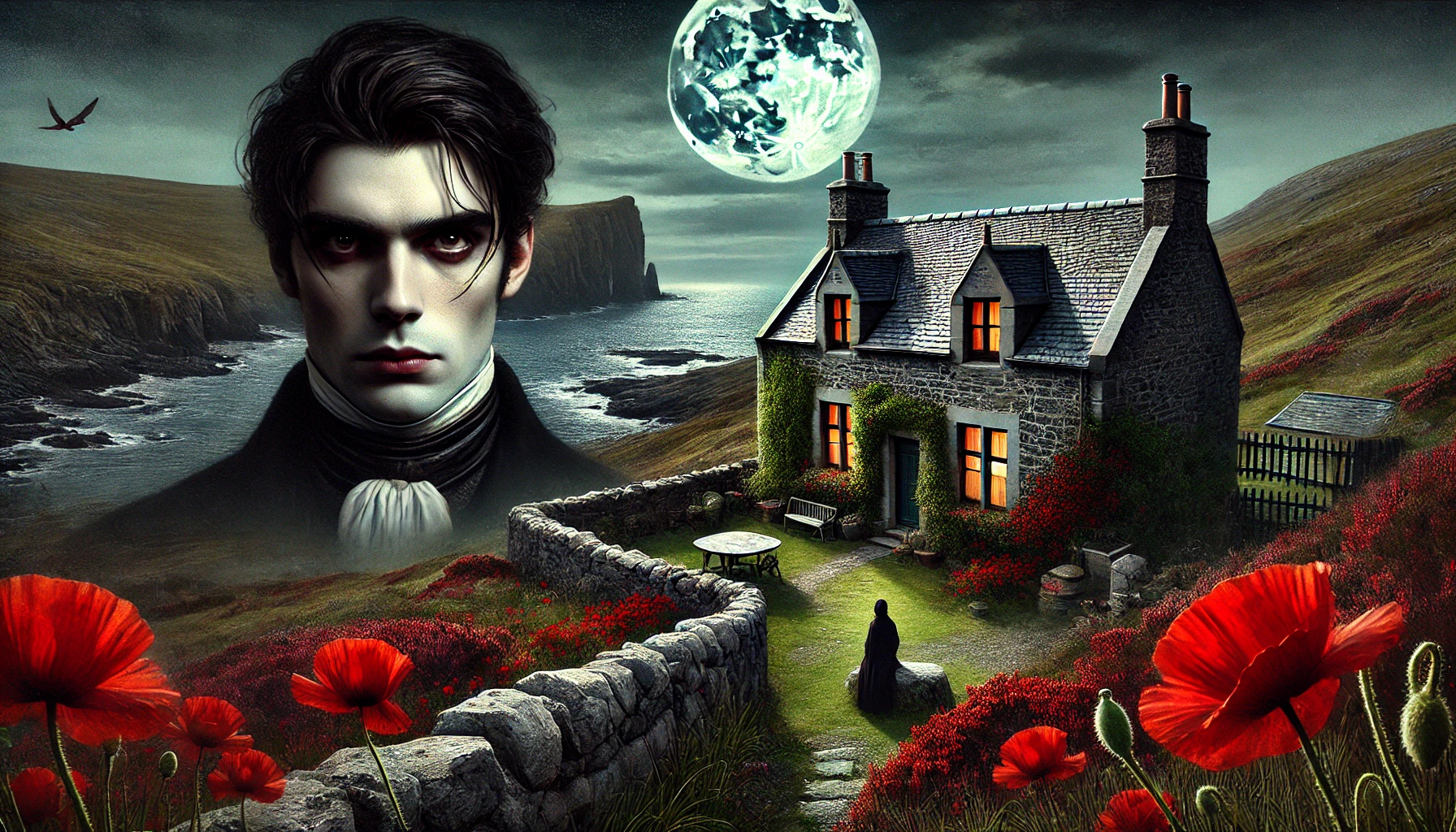“A Tale of the Ragged Mountains” is a short story by Edgar Allan Poe, first published in 1843. The story blends elements of adventure, the supernatural, and the psychological, which are trademarks of Poe’s style. Set against the misty backdrop of the Ragged Mountains near Charlottesville, Virginia, the narrative follows Mr. Augustus Bedloe, a peculiar young man, and his eerie journey through a strange, dreamlike experience that defies explanation. This tale reflects Poe’s fascination with mesmerism, hallucinations, and the thin line between life and death.
Plot Summary
On a dim, misty day in November, amidst the eerie silence of Indian Summer, Augustus Bedloe sets off for his usual solitary walk into the desolate hills of the Ragged Mountains near Charlottesville. Bedloe, a man of peculiar appearance, with his gaunt, tall frame and pale, almost ghostly complexion, had long been a subject of intrigue and unease among those who knew him. His large, almost lifeless eyes, cat-like in their dilation and contraction, seemed to peer into something beyond the ordinary world. For years, he had been under the care of Dr. Templeton, a physician well-versed in mesmerism and magnetic remedies, which seemed to soothe the neuralgic pains that had ravaged Bedloe’s health.
On this particular day, Bedloe vanishes into the wilderness as usual, but his journey takes an unexpected turn. As he follows the winding paths of a gorge he had never before explored, the heavy mist of Indian Summer deepens, shrouding the landscape in a thick fog. Bedloe’s senses, already heightened by the morphine he regularly consumed, begin to take in the world around him with unusual intensity. The fluttering of leaves, the subtle shifts of light, the whisper of the wind — everything seems to speak to him with strange significance. As he walks, time becomes an elusive concept, and he soon loses all sense of direction.
The mist grows thicker, and an overwhelming sense of unease envelops him. He begins to imagine the legends that surround these rugged hills, tales of savage men lurking in the caverns. His thoughts spiral into a vague, disconcerting anxiety. Then, suddenly, through the impenetrable fog, he hears the sound of a drum. The rhythmic pounding reverberates through the air, startling him. Bedloe is seized by amazement and dread, for a drum in these secluded mountains is as improbable as it is alarming.
As the drumbeat continues, Bedloe hears a rattling noise and sees a half-naked man rushing past him in a frenzy, shaking steel rings as he runs. Immediately after, a hyena emerges from the mist, snarling and racing after the man. This bizarre scene convinces Bedloe that he must be dreaming. Desperate to wake from what seems to be a feverish nightmare, he calls out, pinches himself, and even bathes his face in a nearby spring. But the clarity of his sensations — the cold water on his skin, the firmness of the ground beneath his feet — all suggest that this is no ordinary dream.
As he presses on, Bedloe finds himself under a palm tree, a sight that seems utterly alien in the Appalachian wilderness. The heat becomes oppressive, and an unfamiliar odor fills the air. The dense fog lifts, and Bedloe is suddenly standing at the foot of a towering mountain, overlooking a vast plain below. There, in the distance, lies a grand city on the banks of a winding river, the kind of exotic metropolis that might be conjured from the tales of the Arabian Nights. The city is teeming with life — streets crowded with colorful markets, minarets, shrines, and temples rising above a sea of humanity. Elephants parade through the streets, and sacred bulls roam freely amid the throngs of people.
Bedloe descends toward the city, overwhelmed by a sense of urgency, as if he has an important role to play in the unfolding events. As he approaches the city’s outskirts, he finds himself swept up in a crowd of people, all moving with frantic purpose. He senses their excitement and hostility, yet he cannot discern the cause of their agitation. Soon, he stumbles upon a group of British soldiers and sepoys engaged in violent combat against the unruly mob. Without fully understanding why, Bedloe joins the fray, arming himself with a fallen officer’s weapons and fighting with savage intensity.
The battle rages through the narrow streets, but Bedloe’s party is outnumbered and forced to take refuge in a small building. From his vantage point inside, Bedloe watches as the crowd attacks a nearby palace, trying to overthrow its inhabitants. He witnesses a man escape from the upper windows of the palace, using a rope of turbans to lower himself into a waiting boat on the river.
Driven by a sudden impulse, Bedloe rallies a few companions and makes a desperate charge into the mob. The chaotic battle presses them deeper into the maze of streets, where they are met by a rain of arrows from their attackers. One of these arrows strikes Bedloe in the temple. His vision blurs, and a wave of sickness washes over him. He falls, feeling the life drain from his body as darkness envelops him.
For what seems like an eternity, Bedloe is suspended in a state of nothingness, experiencing only the cold void of death. Then, without warning, a sudden shock courses through him, like a surge of electricity. He feels light and weightless, floating above the city. Below him lies his own corpse, disfigured by the poisoned arrow that had pierced his temple. Yet this sight stirs no emotion in him. Detached from his physical form, Bedloe drifts aimlessly back toward the hills where his strange journey began. Upon reaching the place where he had first encountered the hyena, another jolt brings him crashing back into his body, alive once more.
Bedloe returns to Charlottesville, still haunted by the vividness of his experience. Dr. Templeton listens with great interest, and as Bedloe recounts his journey, the doctor reveals something extraordinary. He produces a miniature portrait of a man named Oldeb, a friend he had known in India during the late 18th century. The resemblance between Bedloe and the man in the portrait is uncanny. Templeton further explains that the events Bedloe described mirror the actual events of a historical rebellion in India, where Templeton had witnessed the death of his friend Oldeb, struck down by a poisoned arrow, just as Bedloe had experienced in his vision.
Shortly after this revelation, Bedloe dies unexpectedly from a seemingly trivial illness. In a chilling twist, his death is caused by a venomous leech mistaken for a medicinal one, echoing the poisoned arrow that had ended the life of the man he so eerily resembled.
Main Characters
Augustus Bedloe – A mysterious and enigmatic character who suffers from neuralgia and relies on morphine for relief. He is described as unnaturally tall, pale, and possessing cat-like eyes. Bedloe’s strange personality and appearance are amplified by his disturbing experiences, especially his vivid and bizarre journey into a world seemingly from a past life.
Dr. Templeton – An elderly physician and follower of Mesmer, who treats Bedloe using magnetic remedies. He shares an unusual rapport with his patient, leading to fascinating, yet unsettling occurrences. Dr. Templeton becomes a pivotal figure in unraveling the mystery of Bedloe’s experiences, connecting them to past historical events.
Theme
Mesmerism and the Supernatural – Mesmerism, or hypnotism, plays a crucial role in the story, linking the physical body to spiritual or otherworldly dimensions. The story explores how the mind can transcend ordinary reality, leading to disturbing and surreal experiences.
Death and Resurrection – Bedloe’s journey involves a confrontation with death, as he envisions his own death in a distant past life. This motif of death, combined with his subsequent return to life, raises existential questions about the nature of consciousness and reality.
Historical Memory and Reincarnation – The narrative weaves in references to real historical events, such as the insurrection of Cheyte Sing in India, suggesting themes of past lives and the persistence of memory across time. The eerie connection between Bedloe’s vision and Dr. Templeton’s memories blurs the line between present and past.
Identity and Doppelgangers – A sense of identity crisis pervades the story, with the implication that Bedloe may be a reincarnation or a double of a historical figure. This introduces the motif of doppelgangers, a common theme in Poe’s work, which questions the uniqueness and stability of individual identity.
Writing Style and Tone
Poe’s writing in “A Tale of the Ragged Mountains” is richly atmospheric, filled with vivid and haunting descriptions that create a dreamlike, almost surreal tone. His use of detailed imagery, especially in depicting Bedloe’s strange journey through the mountains, immerses readers in a world that feels both familiar and alien. The story’s language shifts between the tangible and the mystical, reflecting the merging of reality and hallucination.
The tone of the narrative is eerie and contemplative, with moments of suspense and psychological unease. Poe masterfully builds a sense of foreboding, especially as Bedloe’s experiences become increasingly strange and detached from the real world. This is complemented by the philosophical musings on life, death, and the supernatural, which lend a deeper, introspective layer to the tale. The story’s tone keeps readers questioning what is real and what is imagined, leading to a conclusion that is unsettling and ambiguous.
We hope this summary has sparked your interest and would appreciate you following Celsius 233 on social media:
There’s a treasure trove of other fascinating book summaries waiting for you. Check out our collection of stories that inspire, thrill, and provoke thought, just like this one by checking out the Book Shelf or the Library
Remember, while our summaries capture the essence, they can never replace the full experience of reading the book. If this summary intrigued you, consider diving into the complete story – buy the book and immerse yourself in the author’s original work.
If you want to request a book summary, click here.
When Saurabh is not working/watching football/reading books/traveling, you can reach him via Twitter/X, LinkedIn, or Threads
Restart reading!


